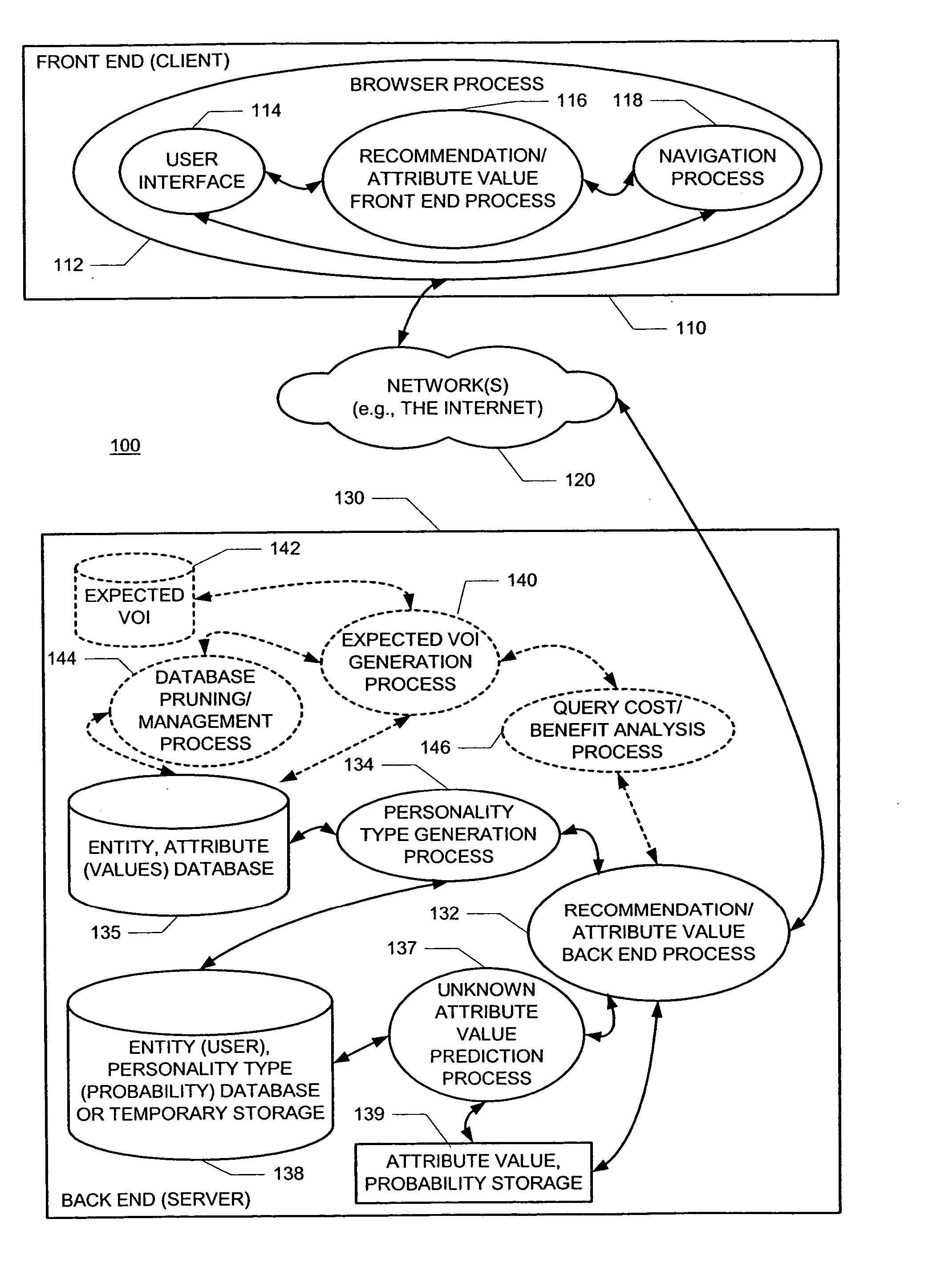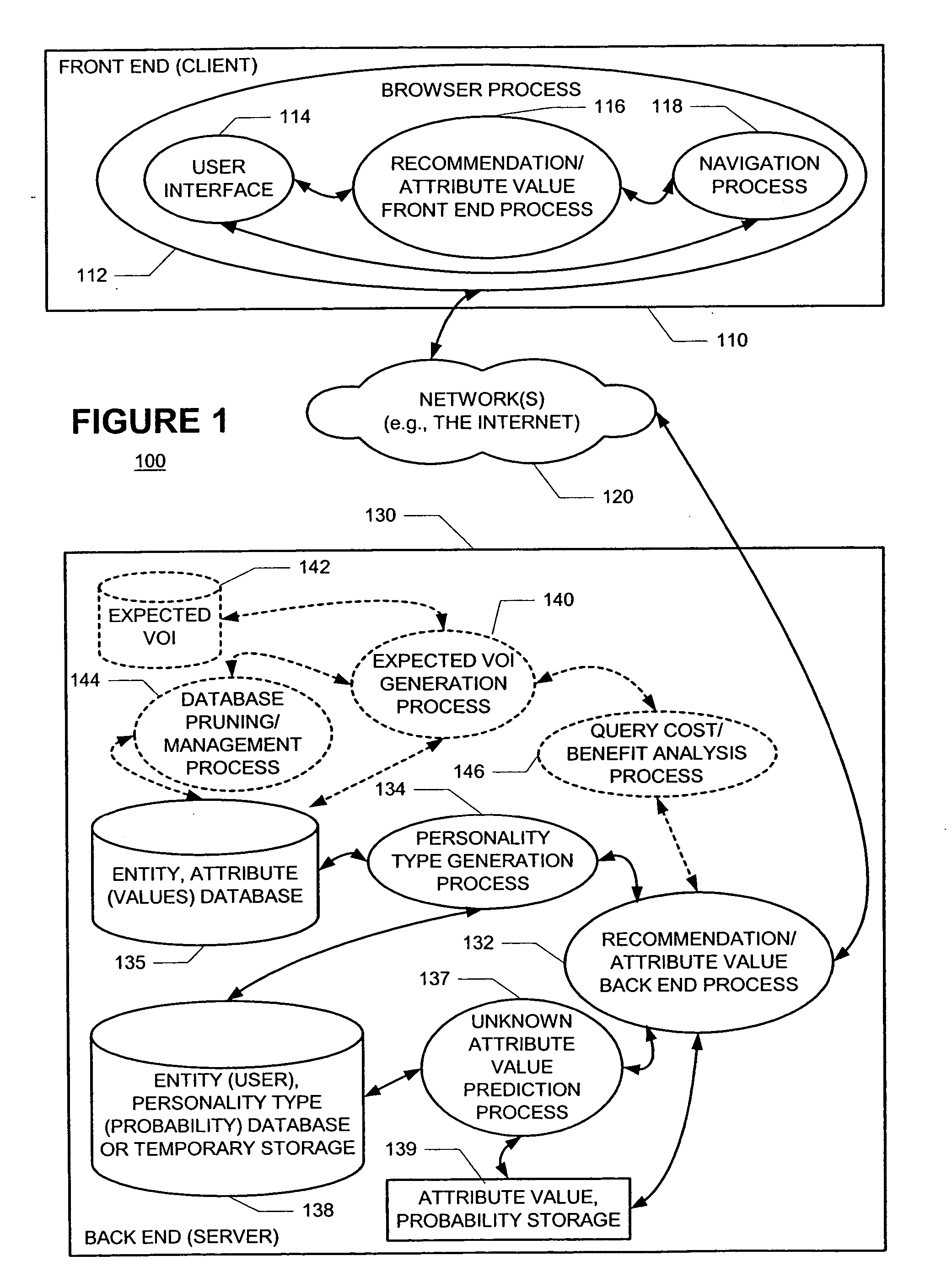Methods and apparatus for predicting and selectively collecting preferences based on personality diagnosis
a personality diagnosis and personality technology, applied in the field of predicting and selectively collecting attribute values, can solve the problems of achieve the effect of minimal effect on the accuracy of recommendations and mollifying what could otherwise be a tedious and frustrating process
- Summary
- Abstract
- Description
- Claims
- Application Information
AI Technical Summary
Benefits of technology
Problems solved by technology
Method used
Image
Examples
Embodiment Construction
[0064] The present invention concerns novel methods, apparatus, and data structures for predicting the values of attributes (e.g., predicting items ratings to be used in recommending items) without at least some of the drawbacks of memory-based and model-based collaborative filtering systems. The following description is presented to enable one skilled in the art to make and use the invention, and is provided in the context of particular applications and their requirements. Various modifications to the disclosed embodiment will be apparent to those skilled in the art, and the general principles set forth below may be applied to other embodiments and applications. Thus, the present invention is not intended to be limited to the embodiments shown.
[0065] Functions that may be performed by the present invention are first presented in .sctn. 4.1 below. Then, exemplary processes, data structures, apparatus and methods which may be used for practicing at least some aspects of the present i...
PUM
 Login to View More
Login to View More Abstract
Description
Claims
Application Information
 Login to View More
Login to View More - R&D
- Intellectual Property
- Life Sciences
- Materials
- Tech Scout
- Unparalleled Data Quality
- Higher Quality Content
- 60% Fewer Hallucinations
Browse by: Latest US Patents, China's latest patents, Technical Efficacy Thesaurus, Application Domain, Technology Topic, Popular Technical Reports.
© 2025 PatSnap. All rights reserved.Legal|Privacy policy|Modern Slavery Act Transparency Statement|Sitemap|About US| Contact US: help@patsnap.com



